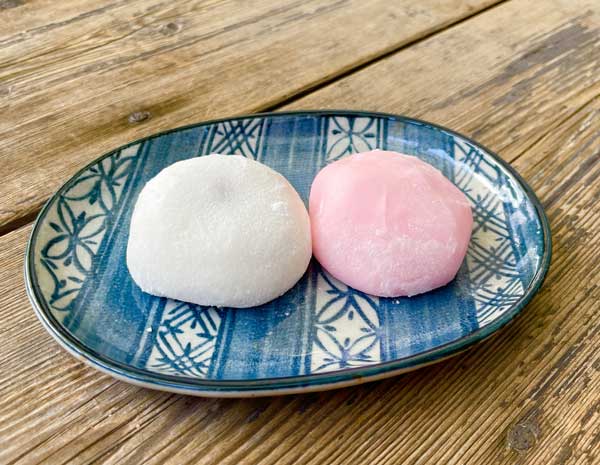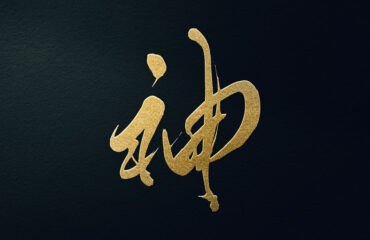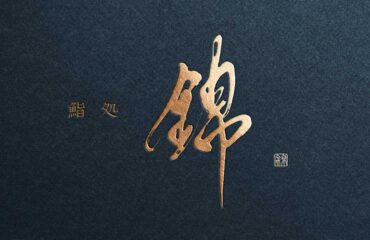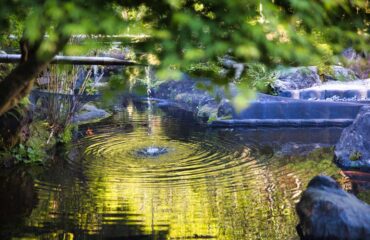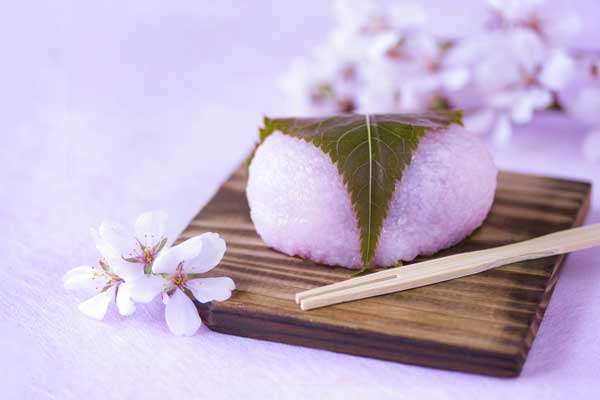
Hello, everyone! Today, I want to talk about the traditional Japanese sweets known as wagashi.
Beautiful in form, delicate in taste, and designed to suit each season and event, these sweets are essentially small works of art that represent the beauty of Japanese culture, customs, and nature.
Types of Wagashi and their Characteristics
First, let’s look at the main types of wagashi and their features.
Namagashi
As the name suggests, namagashi are a type of wagashi that are eaten fresh.
They are characterized by their beautiful shapes, often inspired by seasonal flowers and landscapes, and are typically enjoyed with matcha tea.
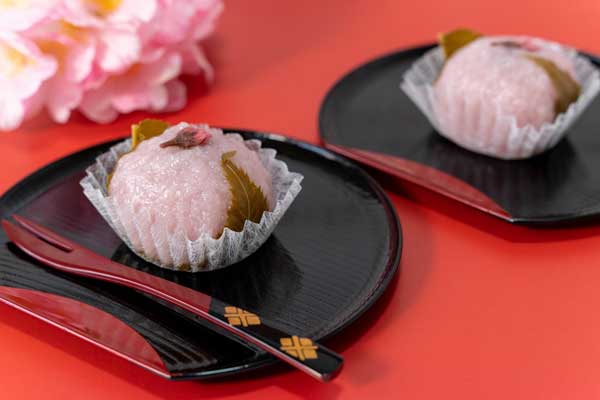
Yakigashi
Yakigashi are baked sweets like dorayaki and monaka.
They have a long shelf-life, making them suitable as souvenirs or gifts.
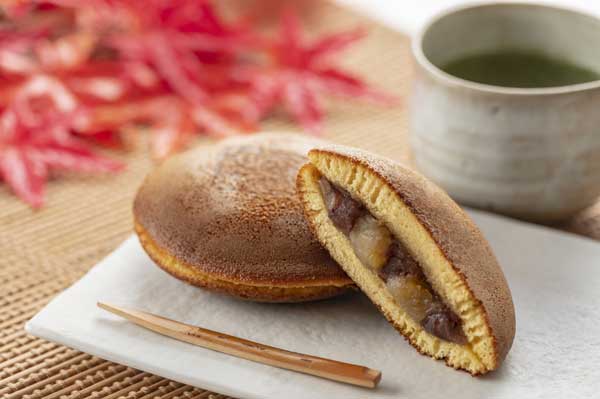
Higashi
Higashi are dried sweets designed for long-term storage.
The most popular examples are arare and senbei rice crackers.
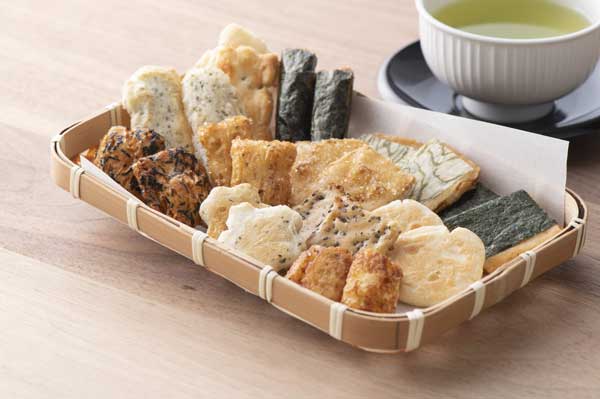
Seasons and Wagashi
Representing the four seasons of Japan is a key element in wagashi making.
Different types of wagashi are made to match each season and event.
For example, in spring, sweets using cherry blossom petals are popular, while in summer, sweets with a cool appearance are preferred.
In autumn, people enjoy moon-viewing dango and chestnut kinton, and in winter, persimmon leaf sushi is a favorite.
Wagashi and Japanese Culture
Wagashi is more than just a sweet treat; it embodies Japanese culture, customs, and the changing seasons.
For instance, in tea ceremonies, beautiful namagashi are served with matcha tea, with each movement and decoration expressing beauty and harmony.
Moreover, wagashi is deeply tied to Japanese events like New Year, Hinamatsuri (Doll’s Festival), and Children’s Day.
The sweets made for these specific seasons or holidays become symbols of these times.
Introduction to Specific Types of Wagashi
Let’s delve deeper into the world of wagashi by exploring some specific types of these traditional Japanese sweets.
Dango
Dango are simple yet delicious sweets made from glutinous rice.
There are various types such as the “sanshoku dango” which has three colored dumplings on a skewer, “an-dango” topped with sweet red bean paste, and “mitarashi dango” coated with a sweet soy glaze.
These are particularly enjoyed during springtime cherry blossom viewing.
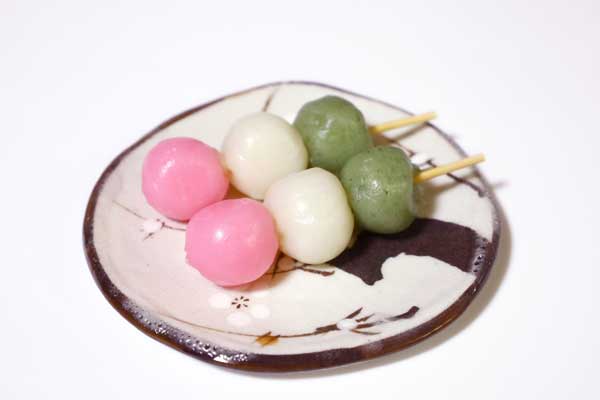
Manju
Manju are made from glutinous rice or wheat flour with sweet red bean paste filling.
Their shapes and designs are incredibly diverse, with regional and seasonal variations to enjoy.
Nerikiri
Nerikiri is a type of wagashi that is often used in tea ceremonies. It is made from sweet white bean paste, sugar, and glutinous rice, resulting in a dough-like consistency that can be molded into intricate shapes and designs. Often, these designs reflect the current season, such as cherry blossoms in spring or maple leaves in autumn, making nerikiri not only delicious but also a feast for the eyes.
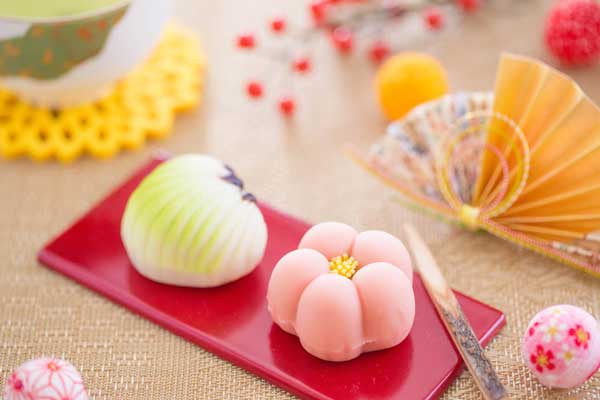
Dorayaki
Dorayaki are pancake-like sweets filled with sweet red bean paste.
While smooth red bean paste is commonly used, other flavors like chestnut, matcha, and custard can be enjoyed.
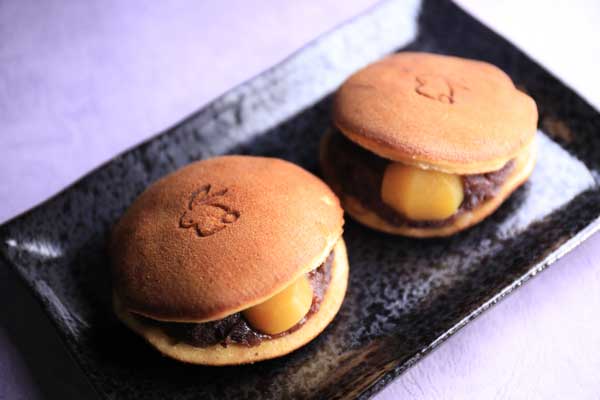
Kuri Kinton
Kuri Kinton, particularly popular in the autumn, is made from sweetened chestnuts and red bean paste, shaped to resemble a chestnut.
It allows you to enjoy the sweetness and texture of the chestnut, a taste of autumn.
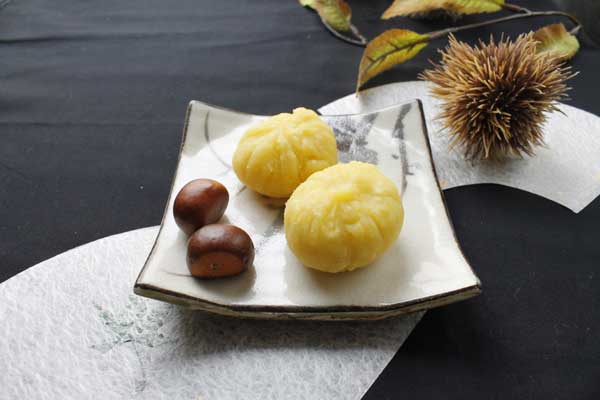
Sakura Mochi
Sakura Mochi, which appears in stores in spring, is a visually stunning wagashi characterized by the fragrance of cherry leaves.
It is wrapped around glutinous rice and red bean paste. The shape differs by region: it’s shaped like a pressed flower in the Kanto region, and like a rolled sushi in the Kansai region.

Yokan
Yokan is a wagashi where red bean paste is solidified into a jelly-like substance.
Its sweetness and melt-in-your-mouth texture are distinctive.
It’s usually square-shaped and eaten in slices. It’s also popular as a summer gift.
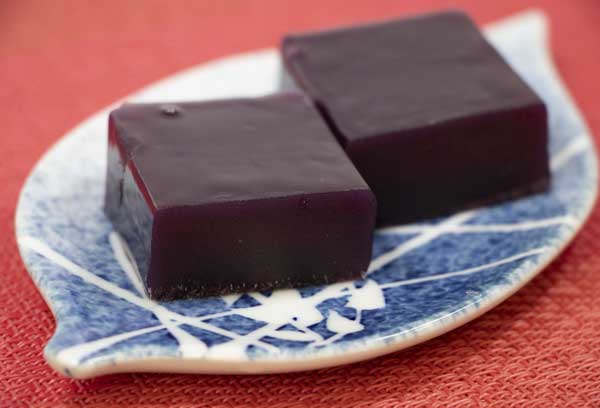
Karin-to
Karin-to is a wagashi made by frying wheat flour dough and coating it with brown sugar.
Its sweetness and crunchy texture make it an ideal accompaniment to tea.
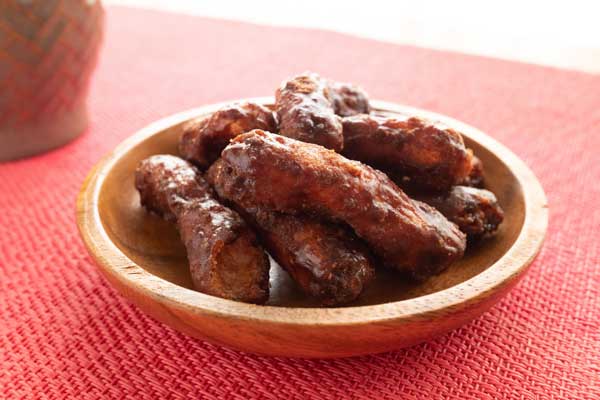
Senbei
Senbei are baked sweets primarily made from rice.
They come in a variety of flavors, from salty to soy-sauce flavored, and even unseasoned.
You can particularly feel the history and tradition in senbei from long-established shops that date back to the Edo period.
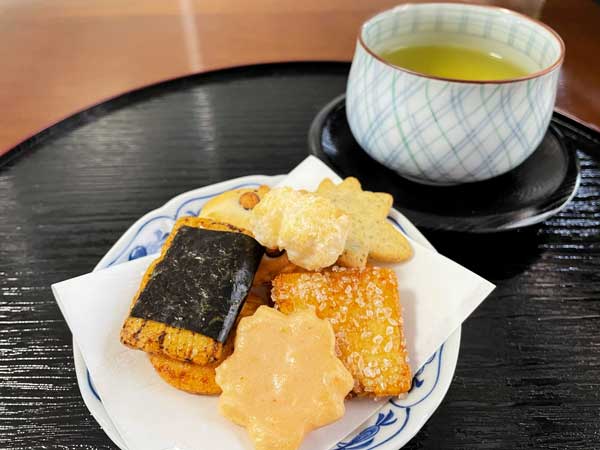
Monaka
Monaka consists of red bean paste sandwiched between two mochi wafers.
The wafers are often imprinted with beautiful designs, adding visual enjoyment to the delightful combination of chewy wafers and sweet bean paste.

Rakugan
Rakugan is a traditional dry sweet often used in tea ceremonies.
While simple in shape, they exhibit intricate designs, colors, and textures meant to be appreciated visually as well as in taste.
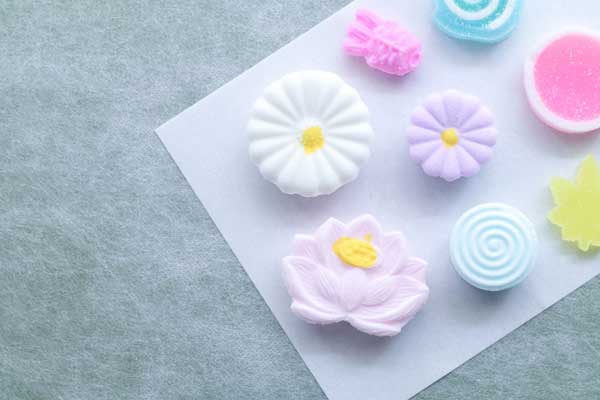
Kuzukiri
Kuzukiri is a jelly-like wagashi made primarily from arrowroot starch, known for its smooth texture.
It’s often enjoyed with matcha tea or red bean paste.
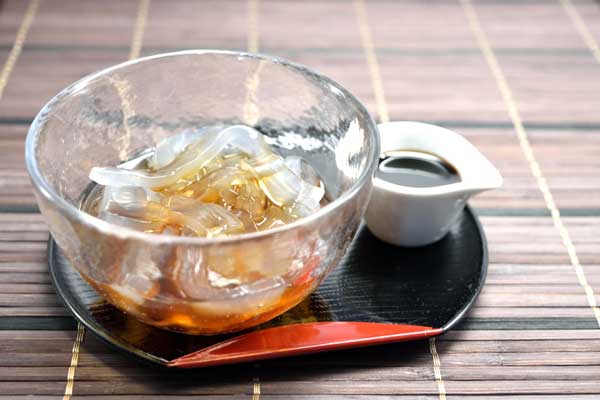
Daifuku
Daifuku is a wagashi consisting of a glutinous rice cake (mochi) stuffed with sweet red bean paste.
There are many variations, including those filled with fruit like strawberry daifuku, and flavored versions like matcha daifuku.
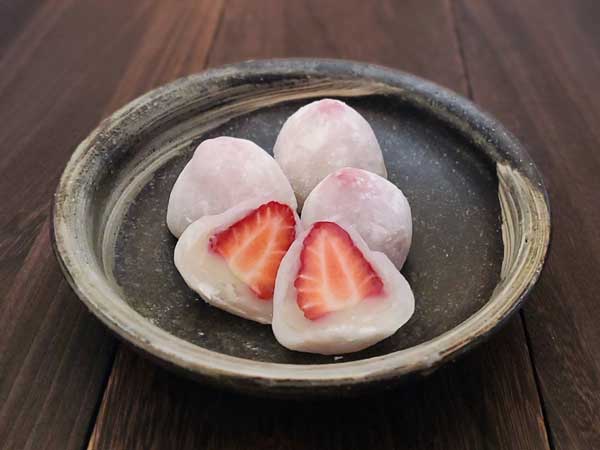
These are just a few examples of the many kinds of wagashi you can find in Japan.
Each one has its own unique taste and texture, and many of them are visually appealing, with their shapes and designs often inspired by nature and the changing seasons.
How to Enjoy Wagashi
There are many ways to enjoy wagashi.
You can enjoy them as a relaxing tea time snack at home, or they can be an ideal gift or souvenir.
Across Japan, there are many long-established wagashi shops, where you can discover local wagashi that reflect the unique features of the area.
In recent years, workshops where you can make your own wagashi have become popular, and the joy of tasting sweets that you made yourself is truly exceptional.
Wagashi, with their beauty and deep cultural background, allow you to experience Japanese culture and seasons through not only visual beauty but also taste.
Each hand-made wagashi lets you feel the tradition and culture of Japan, the skill and passion of the craftsmen – it’s truly edible art.
I look forward to continuing to explore the world of wagashi and share its charm.
Let’s enjoy the journey of wagashi together next time.
That’s it for “The Charm of Wagashi: A Journey through Japanese Tradition and Culture”.
Thank you very much.
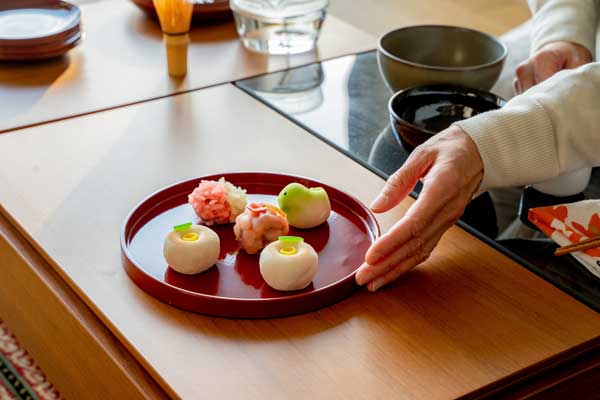
Other Introduction
The Allure of Japanese Gardens
Tradition of Japanese Tea Ceremony – Sado

